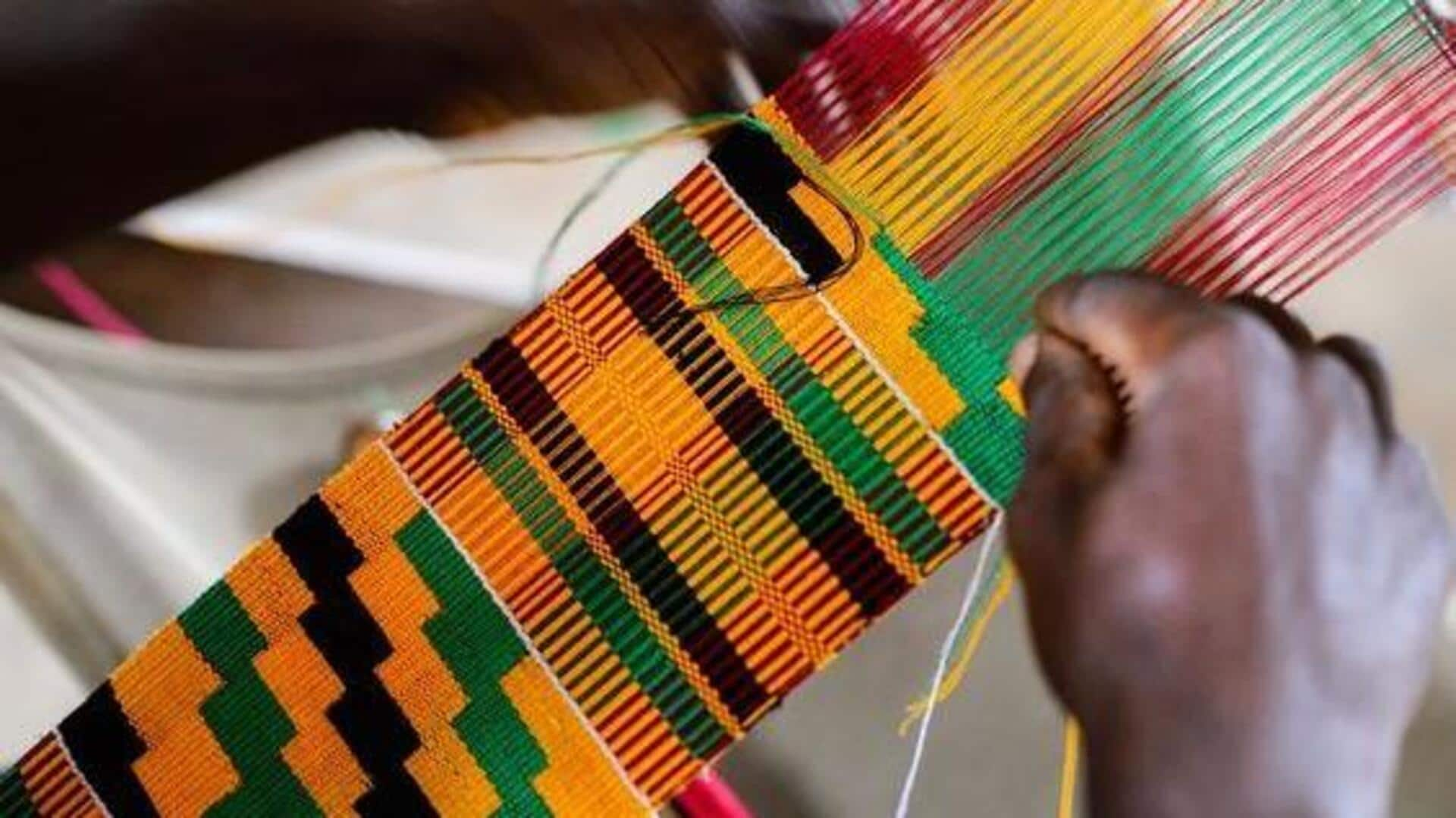
Master African-inspired fabric weaving like a pro
What's the story
The tradition of African-inspired fabric weaving, with its deep cultural significance and vibrant patterns, is a cherished art form passed down through generations. This comprehensive guide provides a wealth of knowledge on techniques, materials, and patterns from the African continent. It's a valuable resource for both beginners and experienced weavers seeking to improve their craft.
Fundamentals
Understanding the basics of weaving
Before diving into African-inspired weaving, make sure you have a solid grasp of weaving fundamentals. This involves getting comfortable with the loom setup, particularly the warp (vertical threads) and weft (horizontal threads). Traditional African weaving often utilizes handlooms for their precision and control in creating intricate patterns. For beginners, it's always a good idea to start with simple patterns to build confidence before moving on to more complex designs.
Materials
Selecting authentic materials
The authenticity of African-inspired fabrics hinges significantly on the materials used. Cotton is the go-to choice due to its durability and accessibility. However, for certain textiles like kente cloth from Ghana or mudcloth from Mali, using the right materials is key—silk for kente and fermented mud dyes for mudcloth. Sourcing authentic materials might require some research or contacting suppliers who specialize in African textiles.
Patterns
Learning traditional patterns
Every African region boasts weaving patterns steeped in history and cultural symbolism. Take the kente cloth: its geometric patterns come alive with vivid colors, each carrying a specific meaning. To weave like a true griot, immerse yourself in learning traditional patterns and their symbolism. Online tutorials or workshops taught by seasoned weavers will be your treasure trove as you master these intricate designs.
Color usage
Embracing color theory
Each color in African fabrics carries a deep cultural significance. Red often symbolizes political struggle or sacrifice, while green signifies growth or fertility. Understanding color theory is crucial for anyone looking to weave authentic African-inspired textiles. Don't be afraid to experiment with color combinations, but always remember to honor their cultural meanings. Your creations will be both beautiful and meaningful.
Skill improvement
Practicing consistently
Like any craft, mastering weaving takes time and patience. Commit to weaving regularly: Even a few minutes a day or an hour a week will make a huge difference over time. Join a community of weavers: Share your tips, ask for advice, and get inspired by others' projects. Embrace mistakes: They're the best teachers! Every mistake is a step toward becoming a better weaver.